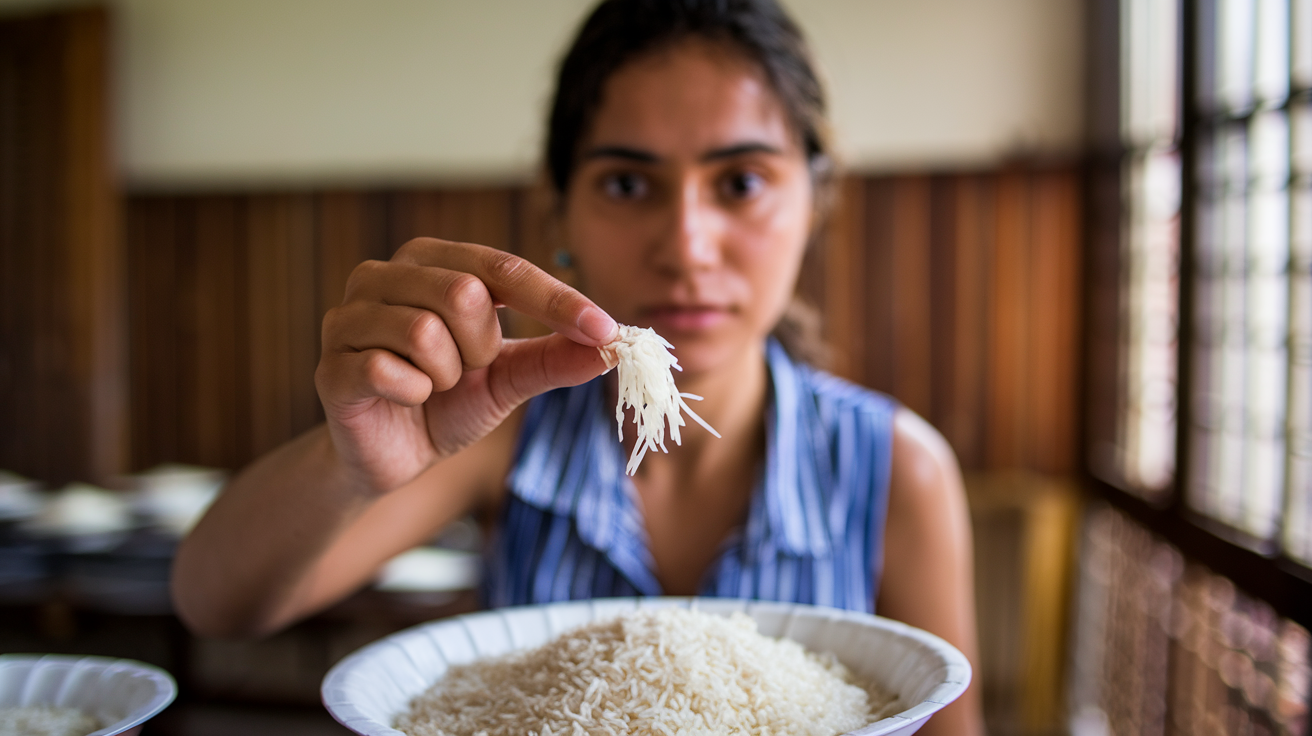The rice purity test has become a familiar name for many, especially among college students and young adults. Rooted in a simple list of questions, the test was initially designed to measure youthful innocence, offering a lighthearted way to assess an individual’s experiences. With its origins at Rice University, the test was crafted to act as a self-assessment tool, helping students reflect on various life experiences. Today, this quiz has evolved into a widespread social phenomenon. The rice purity test continues to attract participants across different age groups, becoming a staple on social media.
Origins of the Rice Purity Test
The rice purity test first emerged as a university tradition. Created at Rice University in Houston, Texas, the test aimed to foster bonding among students by providing a casual way to discuss life experiences. The test’s primary purpose was not to judge or assign value to students’ actions but rather to serve as a conversation starter and encourage honesty among peers. Over time, the quiz became a rite of passage for many students, spreading to campuses across the country. Though initially bound to the university setting, the rice purity test now thrives in the digital space, where anyone can participate and share their results.
The Structure of the Rice Purity Test
Comprising 100 questions, the rice purity test explores a range of experiences, from innocent actions to more mature endeavors. Questions may cover topics like relationships, social interactions, and personal experiences, inviting participants to check off what they have encountered. Each selected item contributes to a lower “purity” score, with 100 being the most innocent and 0 representing the least. By the end of the quiz, users receive a score that theoretically reflects their level of purity.
This straightforward structure is part of the test’s appeal, as it offers a quick, relatable way for people to assess their lives and compare results with friends. Despite its simplicity, the test has managed to maintain relevance by adapting to different social contexts over the years.
How to Take the Rice Purity Test
Taking the rice purity test is both simple and informal. Individuals access the test online, typically through websites dedicated to personality quizzes or social interaction tools. The list of questions is presented in a checkbox format, and participants select items that apply to their life experiences. Once completed, the test calculates a score based on the number of unchecked boxes, representing a final purity rating. Higher scores suggest a higher level of innocence, while lower scores imply a more “experienced” background. Because the test is self-administered, users can complete it privately or share their results on social media platforms.
The Cultural Impact of the Rice Purity Test
Since its inception, the rice purity test has evolved from a university bonding activity into a cultural icon. With the rise of social media, this quiz has transformed from a niche tool for college students to a widely recognized trend. On platforms like TikTok and Twitter, people often share their scores to showcase or laugh about their experiences. Through these online communities, the rice purity test has also become a way for people to engage in lighthearted competition or seek validation. As a result, the test serves as a window into shared life experiences, reinforcing certain cultural norms and sometimes challenging them.
The Appeal of the Rice Purity Test Among Young People
A key factor in the rice purity test’s popularity is its appeal to younger audiences, particularly college-aged individuals. The test is perceived as a fun way to evaluate personal growth, providing insights into one’s journey through adulthood. In this sense, the quiz is often viewed as a non-threatening means of self-assessment. For many, sharing their scores becomes a way to connect with others who have had similar experiences. This appeal likely stems from the fact that the test balances lighthearted fun with curiosity about others’ backgrounds, making it a relatable and enjoyable activity.
Why the Rice Purity Test Remains Relevant Today
The rice purity test’s enduring popularity can be attributed to its simplicity and accessibility. Unlike other quizzes that require analysis or interpretation, the rice purity test provides an immediate numerical result, which is easy to understand. As new generations continue to adopt it, the test serves as a bridge between traditional college culture and the digital age. Its adaptability to social media trends also ensures that it remains relevant, with users finding new ways to interpret and share their results. In an age where self-expression is paramount, the rice purity test offers a playful yet meaningful form of self-reflection.
Analyzing the Questions
The questions within the rice purity test cover a broad spectrum of life experiences, ranging from harmless actions to more personal matters. These questions are arranged progressively, moving from mild topics, like “holding hands romantically,” to more complex experiences. Each item on the list represents a part of life that some may have encountered, while others may not. By maintaining a balance between lighter and more serious topics, the test manages to capture a wide range of experiences without passing judgment. This inclusive approach is likely a reason why the quiz continues to resonate with people from different backgrounds.
The Role of Social Media in Popularizing
Social media has played a significant role in bringing the rice purity test to a larger audience. Platforms like TikTok and Twitter allow users to share their results, which in turn sparks curiosity among others. The test’s appeal lies in its shareable nature, making it ideal for social media trends. Many users post their scores as a conversation starter, inviting friends to participate. In this way, social media acts as a catalyst, amplifying the test’s reach and reinforcing its presence in popular culture.
The Rice Purity Test and Its Influence on College Culture
Within college communities, the rice purity test holds a unique position. Seen as both a humorous and insightful activity, it provides students with a way to explore personal boundaries and shared experiences. Since college is often a time of self-discovery, the test aligns with this phase of life, offering a safe and lighthearted way to reflect on personal choices. Many students view the test as an unofficial part of college life, contributing to its longstanding association with campus culture.
Psychological Perspectives
From a psychological viewpoint, the rice purity test offers insights into how people perceive themselves and others. By quantifying personal experiences, the test encourages reflection and self-assessment, two elements central to personal growth. Additionally, the score can influence how individuals view their own life choices. While some see a high score as a badge of innocence, others may regard a lower score as evidence of a well-lived life. This varied interpretation highlights the subjective nature of the test, where the score holds different meanings for different individuals.
Criticisms and Limitations of the Rice Purity Test
While the rice purity test is popular, it is not without criticisms. Some argue that it reinforces certain stereotypes or places undue value on specific life experiences. For instance, achieving a low score could be perceived as a sign of maturity or experience, while a high score might imply naivety. Critics claim that this binary outlook oversimplifies human experiences, failing to account for individual differences. However, supporters counter that the test is intended to be lighthearted and not a definitive assessment of one’s character. Thus, the rice purity test remains a polarizing yet beloved activity.
How the Rice Purity Test Has Evolved Over Time
The rice purity test has seen multiple iterations, adapting to the changing attitudes and values of society. In recent years, newer versions have emerged, incorporating modern references or adjusting the questions to align with contemporary experiences. Some versions now include questions related to technology, social media, and other modern phenomena. These adaptations keep the test relevant, enabling it to continue as a popular trend among today’s youth.
Taking the Rice Purity Test Online
With digital access, taking the rice purity test has become more convenient than ever. Numerous websites host the quiz, and it can be taken anonymously, providing privacy for users who may feel hesitant about sharing personal experiences. Additionally, several platforms offer variations of the test, each with its unique set of questions. Online versions retain the original format while sometimes adding new elements that cater to a wider audience. This accessibility has contributed to the test’s sustained popularity, allowing it to reach people worldwide.
The Meaning Behind the Test Scores
Interpretation of rice purity test scores varies greatly among participants. Generally, a high score indicates fewer life experiences or a more “innocent” background, while a lower score reflects a broader range of experiences. However, these interpretations are not universal. Some individuals see their scores as a reflection of personal growth, while others may view them with humor, seeing the test as an amusing diversion rather than a meaningful assessment. Ultimately, the meaning behind a rice purity test score is subjective and should be taken with a grain of salt.
Why People Share Their Results
One of the most intriguing aspects of the rice purity test is the willingness of people to share their scores publicly. For many, sharing results on social media is a way to express individuality and connect with others. Posting a score can serve as an invitation for others to discuss their own experiences, creating a sense of camaraderie. In this sense, the rice purity test has become a vehicle for self-expression, allowing people to find common ground and open up about their past.
The Future of the Rice Purity Test
Looking ahead, the rice purity test is likely to continue evolving, adapting to new cultural shifts and preferences. As online trends change and new platforms emerge, the test may undergo additional modifications to stay relevant. Regardless of these changes, the fundamental appeal of the rice purity test is expected to endure. Its combination of simplicity, relatability, and social engagement makes it a timeless activity. In the years to come, the test will likely remain a cherished tradition for new generations, fostering connections and sparking conversations worldwide.







